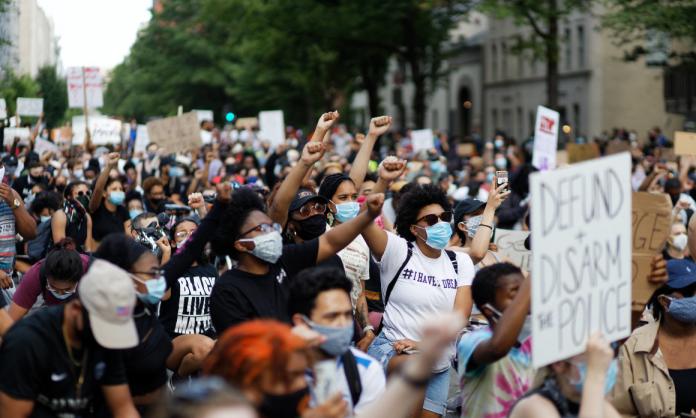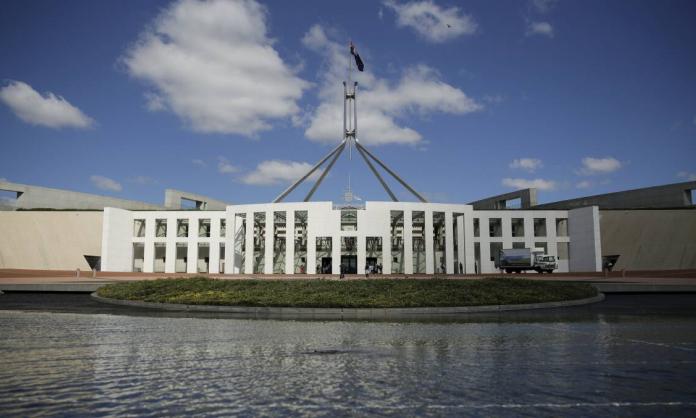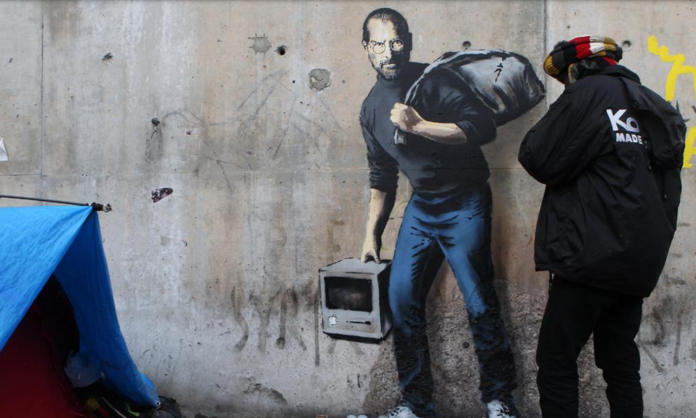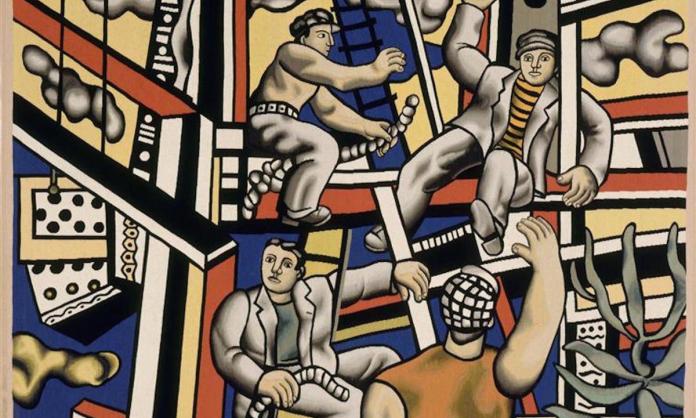Mass protests change people. The act of collectively standing together pushes aside the powerlessness we experience in everyday life, builds confidence and generates a sense of strength.
This experience lies at the heart of all famous movements against tyranny and oppression, all social action which has won radical reforms or ended wars. Protests are not just some strategy to pressure politicians to grant our demands, even though at times they do. They are essential if fundamental social change is to be achieved.
Russian revolutionary Vladimir Lenin summed up a process which he observed during mass strikes across the Russian empire more than 100 years ago:
“The masses, which have ... often been ignored and even despised by superficial observers, enter the political arena as active combatants. These masses are learning in practice ... are taking their first tentative steps, feeling their way, defining their objectives, testing themselves.”
That is, they were learning that they could run the world themselves and that they didn’t have to just put up with the rich and powerful running society in their own interests.
We glimpsed very tentative beginnings of this process in the weekly marches of tens of thousands and other protests in solidarity with Gaza around Australia. A minority have been shocked into passionate activity by Israel’s genocidal war. It is important to recognise what makes such developments precious.
Demonstrations are really a form of a “people’s assembly” in which participants can debate and discuss politics, strategy and tactics, and strengthen their collective resolve. Public spaces we have sat in or walked across, never exchanging more than a glance or a smile with others, are transformed by demonstrations. Now, the space is ours. Others gather around, considering whether to join in, whether to spill into the streets and march.
As the famous art critic and novelist John Berger put it in a 1968 essay:
“A mass demonstration distinguishes itself from other mass crowds because it congregates in public to create its function ... It is an assembly which challenges what is given by the mere fact of its coming together ... By demonstrating, [the protesters] manifest a greater freedom and independence—a greater creativity ... than they can ever achieve individually or collectively when pursuing their regular lives. In their regular pursuits they only modify circumstances; by demonstrating, they symbolically oppose their very existence to circumstances.”
At protests, people browse information stalls, some of which raise many issues, not just the issue about which the protest has been called. People read leaflets, buy radical papers and books they’ve never encountered before and which both confirm and challenge many of the ideas they bring with them. Their political horizons are broadened.
At the end of 2023 and into this year, smaller protests spiralled out from the confidence generated at the central weekly marches against Israel’s war. Hundreds rallied at local council meetings, demanding they pass motions of solidarity with Gaza and fly the Palestinian flag. Local suburban rallies, pickets of arms suppliers to Israel and of Israeli ships at the wharves attracted hundreds. Banners, stickers and posters have appeared around city streets in numbers not seen for years.
A new generation of university students has rejuvenated Students for Palestine, which was originally formed in previous Israeli wars on Gaza. They have mobilised large, lively protests with fresh energy. Teenage organisers of high school walk outs in November demolished in a few scathing sentences the insults hurled at them by school principals, politicians and the media.
“I’ve learned a lot coming here, meeting people and standing up with others for justice”, one of them said; another that she learned more being at the strike rally for two hours than “in an entire semester of history”. “Kids in Gaza can’t go to school and haven’t been able to for weeks”, a student from Pascoe Vale Girls’ School said. “Missing one afternoon seems very unimportant when you think about that.”
As individuals, many of them probably instinctively drew conclusions about Israel’s terror. But the big protests created an incentive to get together. This then built their confidence to defy the principals, and then to confront the media’s hostile questioning.
No amount of respectful lobbying of MPs or petitioning of the UN can demonstrate so clearly how society operates. The students discovered, and demonstrated to others, that democracy, free speech and the right to protest are really only meant for those who go along with whatever barbarity our governments enact or support.
Such grassroots protests pose the questions: whose democracy? Whose order? They ask of others: help us disrupt the “order” that entrenches the power of the already powerful.
Disrupting business as usual through protests can build a sense of power by participants taking back some control over circumstances that are normally beyond our control. Disruption says: this movement is one worth taking risks for. Defying those who wield authority in this hideous system enhances democracy and free speech.
The activity of organising rallies, sit-ins, media appearances, strikes and much more promotes debate. It helps to clarify political issues, reveals the truth about our society and shows what the mainstream political parties really stand for. And activists able to inspire wider layers to rebel and build an ever expanding and powerful movement emerge as leaders—leaders with genuine courage and conviction, unlike our purported “leaders” in parliament, who do only what’s best for their careers.
Yet, as Vincent Bevins, author of If We Burn: The Mass Protest Decade and the Missing Revolution, argues: “It should be obvious that humans do not spontaneously adopt the correct response to a given set of injustices”. So the debates such movements generate are vital.
Socialists want to win more people, especially leading activists, to an anti-capitalist perspective; one recognising that the root cause of pretty much every problem in the world is that society is divided by class and organised to enrich a minority at the expense of the majority. We publish our ideas in Red Flag and hold public meetings while organising beside other activists so our perspectives can be tested in practice.
Ultimately, workers’ strikes are the most powerful protest. Trade unions can challenge the right of capitalists to exploit us, to dominate us, to make profits—the very basis of this society. They can inspire others even more than even large demonstrations. Mass demonstrations of striking workers embody power, not just symbolically, but in reality.
Workers have been ground down by four decades of attacks that have led to increased wealth inequality and degraded public services. Unions are weakened by defeats and the policies of their leaders, who spend most of their time sucking up to the powerful and the politicians, rather than fighting them. But workers can at times be convinced to act even when their own leaders refuse to.
A vital aspect of the art of politics is learning how to link the vitality of student and other street protests with workers’ power. A movement of radical militancy, one noted for supporting every oppressed group and opposing attacks on democratic and union rights can, in the right circumstances, convince workers to take a stand.
Writing in a jail cell in early 1915 after being imprisoned for anti-war activity, Rosa Luxemburg, a Polish revolutionary socialist, argued that the world faced a choice: socialism or barbarism.
Her words about World War One strike a chord today as we witness the atrocities in Gaza enabled by Western imperialist powers—and while leaders of the trade union movement refuse to lift a finger to end the bloodshed despite so many trade union members wanting to take anti-war action.
Imperialism’s “bloody sword of genocide has brutally tilted the scale toward the abyss of misery”. “But”, she went on, “we are not lost, and we will be victorious if we have not unlearned how to learn. And if the present leaders of the working class ... do not understand how to learn, then they will go under to make room for people capable of dealing with a new world”.
If Luxemburg is to be proven right, these fundamental aspects of mass movements and of how people become capable of challenging capitalism is of vital importance.
This is a revised version of a 2019 article, “Strike, rally, occupy: building a mass movement”. It has been updated for the 2024 Red Flag campus supplement.











